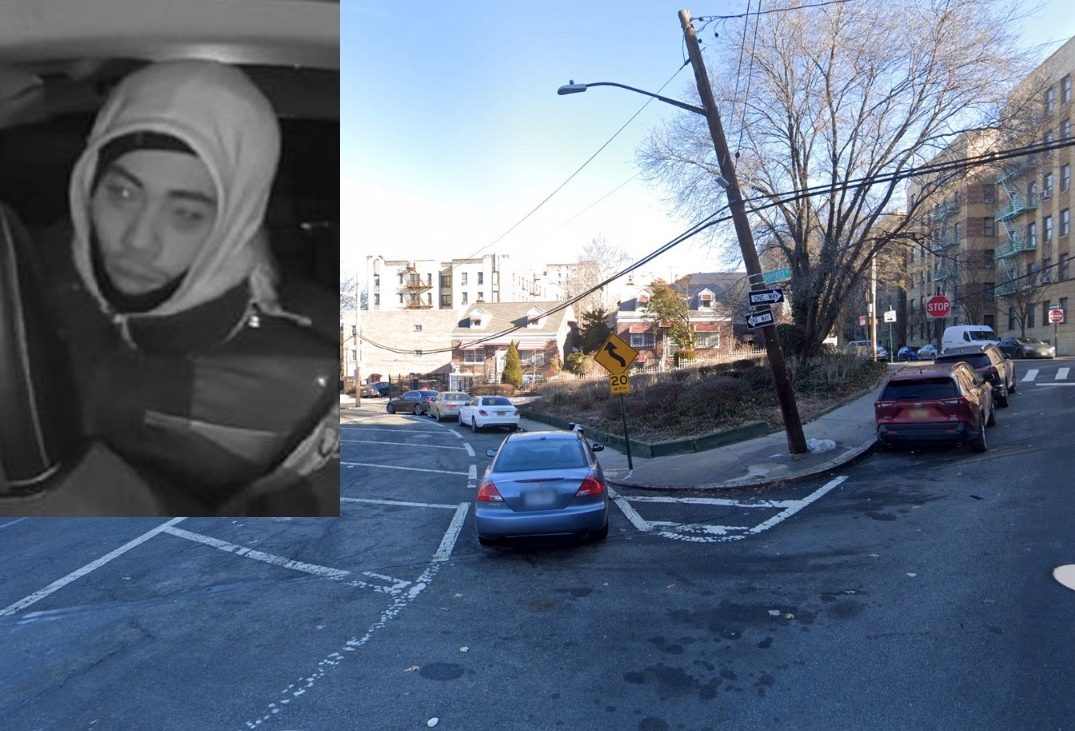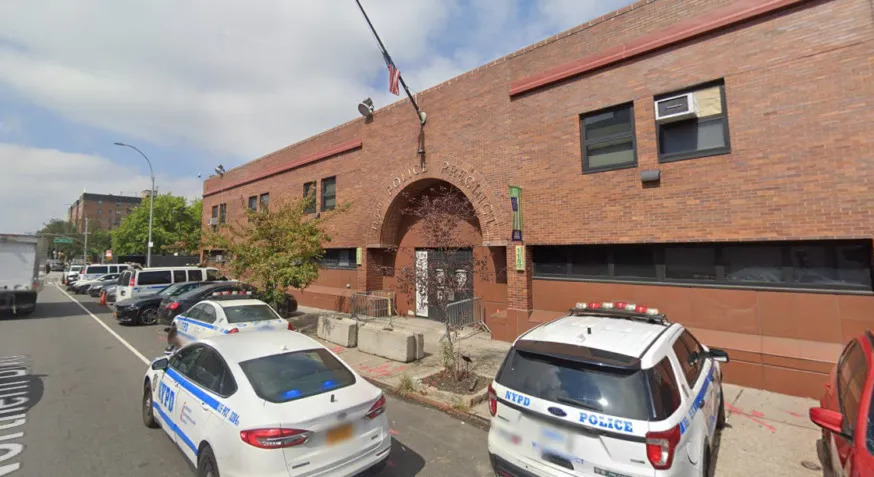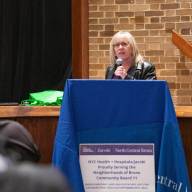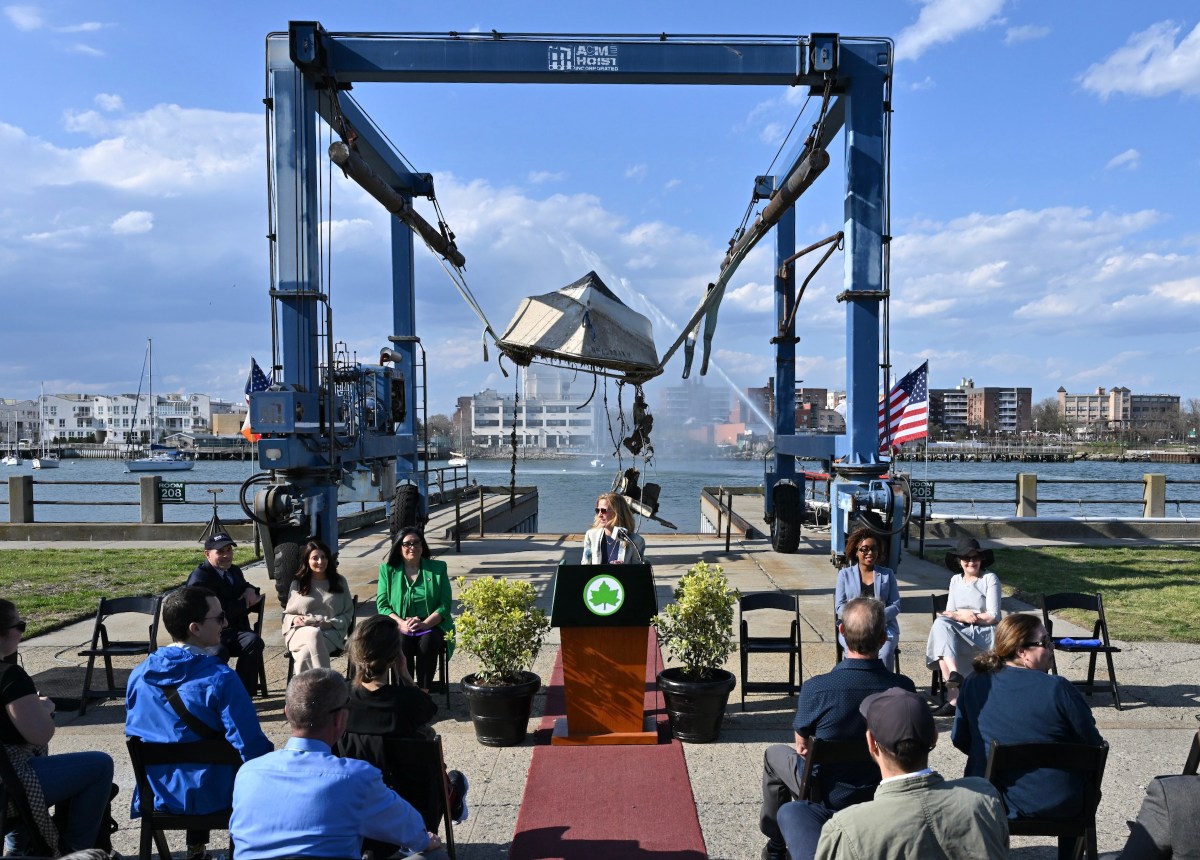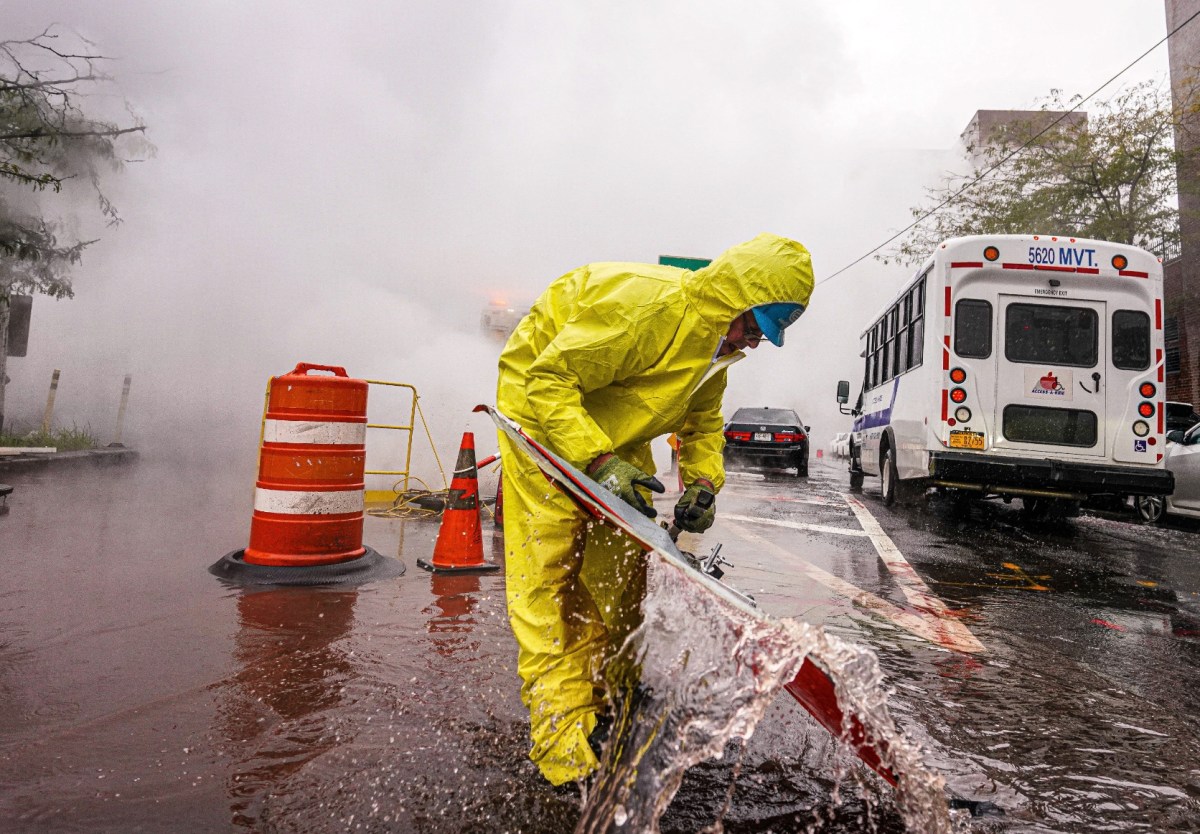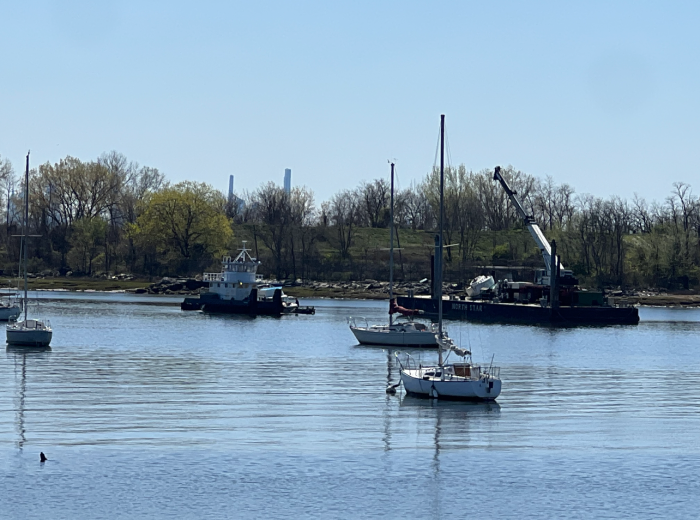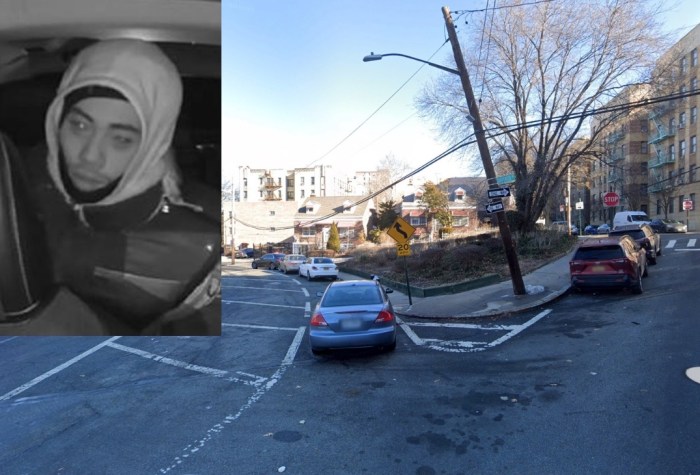Last year, produce handlers and delivery drivers at the Hunts Point Produce Market — NYC’s biggest food distribution center, which provides almost five billion pounds of food to city restaurants, supermarkets and bodegas, and an estimated 25% of the produce in the city — arranged a strike, fed up with management only offering them a 32-cent raise during a pandemic when they worked tirelessly to feed the city.
A few days later, following the largest pay raise in decades for the market’s workers — $1.85 per hour more over three years, including an increase of 70 cents per hour in the first year — in January 2021, the Hunts Point Market had other external forces to grapple with including a comprehensive update to its aging infrastructure amid severe climate vulnerability.
The market’s critical infrastructure site, including its 355 Food Center Drive, 400 Food Center Drive and 600 Food Center Drive — faced heightened climate vulnerability with a high likelihood that they could see between one and three feet of sea level rise inundation by 2050, a 2017 Hunts Point climate resiliency study found that would lead to significant food losses.
In recent months, the market has seen major investment and support from both federal and city partners hoping to usher the food distribution center’s modernization as it aims to be a local economic anchor.
With a bipartisan infrastructure package signed by President Joe Biden in November, $110 million was secured for the redevelopment of the produce market to become environmentally sustainable while improving its facilities, and the hope is that if or when the newfound investment changes the market’s outlook, so will the surrounding neighborhood.
Roughly 40% of Hunts Point residents live in poverty, battle poor environmental factors and are often in the bottom-end of citywide statistics when it comes to job growth and public safety.
While Hunts Point is home to one of the largest food markets in the country, the neighborhood also has one of the highest food insecurity levels in NYC, where 23% of the residents are food insecure, according to NYC Food Policy.
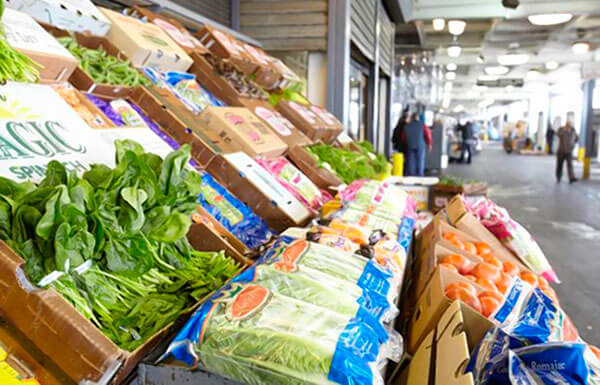
“Revitalizing the Hunts Point Produce Market will have a direct economic and environmental impact — not only nationally but especially locally right here in the Bronx,” said Phillip Grant, CEO of the Hunts Point Produce Market. “We are hopeful that with the outstanding support we have received from our federal and city leadership that we will be able to secure the additional public support needed to truly revitalize our market and, as a result, significantly improve our region’s food infrastructure for generations to come.”
The market is expected to use funding dollars to redevelop the market into a new 1 million-square-foot, state-of-the-art intermodal freight facility and a refrigerated warehouse space. The produce market was built in 1962 on 40 acres, and has since grown to 113 acres with four warehouses.
City officials also tout the market’s redevelopment efforts as a way to “keep and grow” 2,000 quality jobs. In 2020, Community District 2, which is home to Hunts Point, consistently had the highest death rates in the city, and unemployment projections stayed above the city average of 20% at the time.
The new facility will meet federal requirements from the U.S. Food and Drug Administration’s new Food Safety Modernization Act — eliminating 1,000 diesel-powered refrigerated trailer units currently idling onsite as additional storage and significantly reducing emissions in the surrounding community.
Locally, the majority-Latino Hunts Point community could benefit from a bolstered supply chain and reduction in environmental harm that’s potentially a breath of fresh air for climate-vulnerable residents — who are dealing with the nation’s highest-asthma rates and felt the health and economic blows of COVID-19 more deeply than other boroughs.
Child asthma emergency room visits was 63% higher in Hunts Point than the rest of New York City, and it ranked seventh for adult asthma hospitalizations. An air quality map released by the NYC Department of Health in 2021 also showed that ZIP codes adjacent to Hunts Point had a higher concentration of air pollutants than the rest of the Bronx.
“By removing 1,000 diesel-powered refrigerated trailer units currently idling on site, this generous grant will significantly reduce pollution and improve air quality in the South Bronx,” said New York City Chief Climate Officer Rohit T. Aggarwala. “Further improvements to truck circulation within the facility and improving access to rail will also result in healthier air for those who live and work in this already overburdened community.”
In addition to infrastructure that remain unchanged since the 1960s, trash and debris would commonly be scattered on the floors of the four warehouses under an idle supply of diesel trucks, longtime workers told the Bronx Times.

The effects on the South Bronx environment and its inhabitants due to peakers in the area and the city’s reliance on fossil fuels — approximately 85% of the city’s electricity is powered by fossil fuels — is potentially irreversible, residents and environmentalists tell the Times.
Flooding in the Hunts Point peninsula also threatens almost a third of the area, which lies within the 100-year floodplain. Climate studies in the area noted that power outages could cause Hunts Point to lose refrigeration for an extended period of time, allowing a significant amount of food to spoil.
The redevelopment will also improve site circulation and coordination of inbound and outbound traffic — where more than 78,000 vehicles travel daily to the Hunts Point peninsula, according to the New York State Department of Transportation.
“For far too long, historically overburdened neighborhoods, like Hunts Point, have suffered the impacts of polluting infrastructure,” said Kizzy Charles-Guzman, executive director for the city’s Office of Climate and Environmental Justice. “This historic investment in the Hunts Point Produce Market will improve the facility’s energy efficiency and remove carbon, soot and fossil fuel pollution from our air. Investments like this are crucial to improving health and developing and supporting a green economy in New York City.”
Developers struck a $1.7 million deal — unpopular with residents — to provide direct access to the Hunts Point Market from both the Bruckner Expressway and Sheridan Boulevard.
“Hunts Point Market is extremely vital to New York City’s food supply chain, but it needs a critical modernization and redevelopment to sustain the community and chart an even better future. Now, with $110 million in federal funds, revitalization of the market is one giant step closer,” said U.S. Senator Chuck Schumer. “These funds will help increase food security, meet growing food demands, maintain and produce new good-paying jobs, reduce diesel emissions in an area with a sky-high asthma rate, and so much more.”
The produce market distributes 2.5 billion pounds of produce a year to New York City and the New York metropolitan region, is a focal point of Mayor Eric Adams’ “Rebuild, Renew, Reinvent: A Blueprint for New York City’s Economic Recovery” and his “Hunts Point Forward” plan announced earlier this year.
The grant application for federal funding was prepared by the city Economic Development Corporation, the city Department of Transportation and the city Department of Small Business Services.
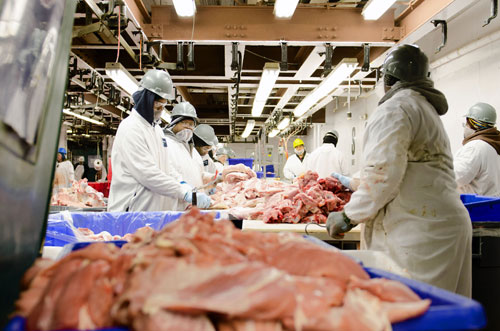
Reach Robbie Sequeira at rsequeira@schnepsmedia.com or (718) 260-4599. For more coverage, follow us on Twitter, Facebook and Instagram @bronxtimes.







